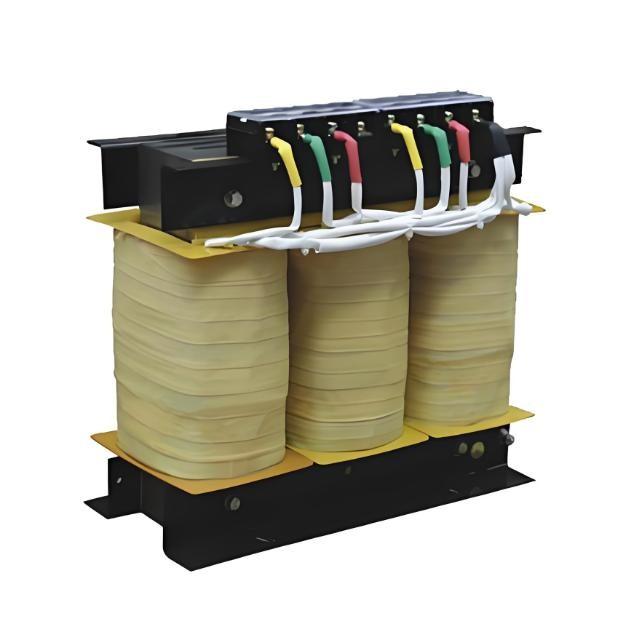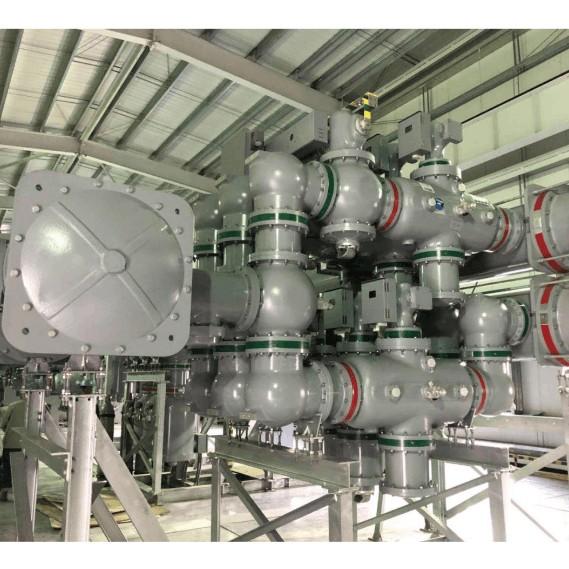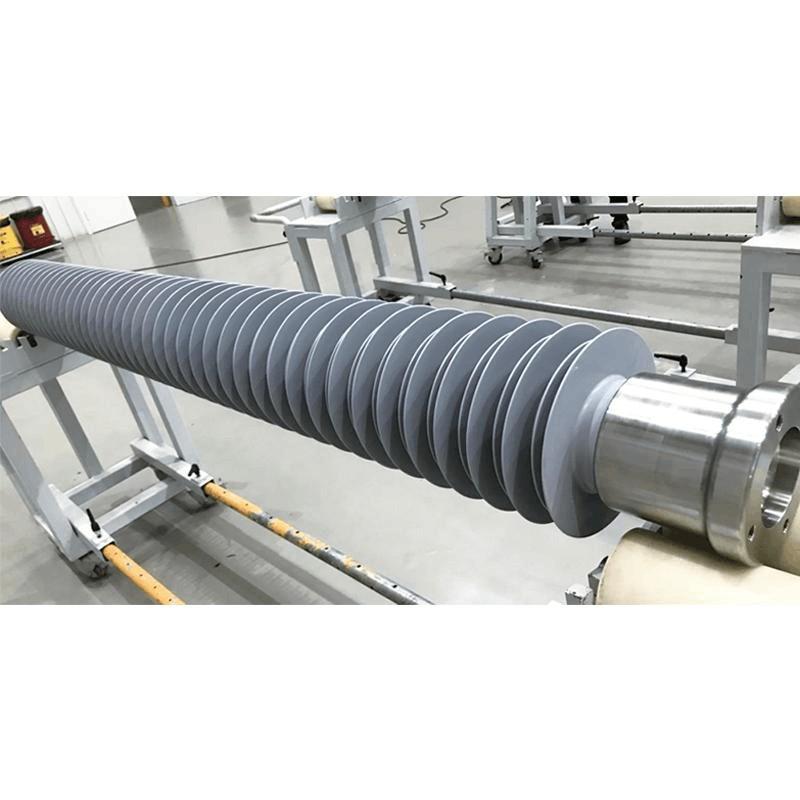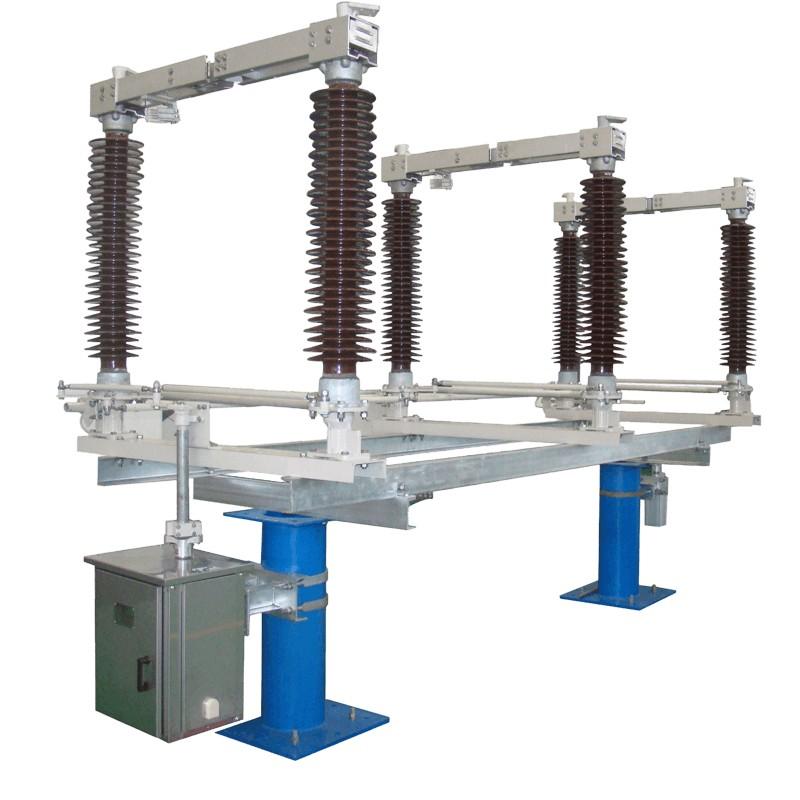Farko Farko Gas Insulted Switchgear (GIS) Field Testing According to IEEE C37.122
Gas-insulated substation (GIS) na farko cikin kasa. Wannan shine inda duk muhimman abubuwa da ke gudana a GIS zai haɗa daɗi a lokacin farko. Idan ana iya gudanar da GIS a makaranta tsakanin, yana bukata a bude da shi don tashin hanyoyin da kuma a bude da shi, sannan a gudanar da shi a matsayin gwamnatin gudanar da shi.
Manufar da wannan labarin field tests shine bayyana cewa duk muhimman abubuwan GIS suna fadada a kan jirgin sama da a kan jirgin kimiyya ba a bude da shi a matsayin gwamnati. Wannan labari tana ba wani hali mai karfi cewa an gudanar da GIS daidai kuma za su yi a hankali.
Jirgin Kimiyya: Gas Leakage da Gas Quality (Moisture, Purity, and Density)
Gas Leakage Test:Duk gas compartments ta GIS ya kamata a ci gas sulfur hexafluoride (SF6) ko gas mixture da take da ita zuwa rated filling pressure da maimakonin ya bayyana. Sannan, ake yi labari don tabbatar da gas leakage. Aka yi initial inspection don tabbatar da gas leakage points da kuma ingantaccen maximum gas leak rate. Wannan gas leak test ya kamata a yi game da enclosure flanges, enclosure welds, da kuma gas monitoring devices, gas valves, da kuma interconnecting gas piping da aka gudanar da su a matsayin gwamnati.
Moisture Content Measurement:A kamata a ci moisture content ta gas kadan a gudanar da GIS. Don samun ci gaba, moisture content ya kamata a ci a lokacin da maimakonin ya bayyana. Moisture content ba zai iya fi girma da limit da maimakonin ya bayyana ko value da aka gudanar da shi bayan maimakonin da masu amfani, waɗanda ya kamata zama da dabi’u.
Gas Purity Verification:Kadan a gudanar da GIS, purity ta gas, a bayyana a kan percentage of SF6, ya kamata a tabbatar da shi. Purity ta gas ya kamata a tabbatar da shi a kan requirements da maimakonin ya bayyana.
Gas Density Measurement:Density ta gas ya kamata a ci da kuma a tabbatar da shi a kan nominal rated filling requirements da maimakonin ya bayyana.

2. Jirgin Sama: Contact Resistance
Main Current - Carrying Circuits:Contact resistance measurements of the main current - carrying circuits are required for each bus connecting joint, circuit breaker, disconnect switch, grounding switch, bushing, and power cable connection. These measurements are used to demonstrate and verify that the resistance values are within the specified limits.
GIS Enclosure Bonding
Connections (for Isolated Phase Bus):In cases where an isolated (single) - phase bus is utilized, contact resistance measurements also need to be performed on the GIS enclosure bonding connections. The resistivity measurements should not exceed the maximum permissible values as per IEEE Std C37.100.1.
3. Jirgin Sama: Low - Frequency AC Voltage Withstand Test
Gaseous and solid insulation (dielectrics) inside the gas - insulated substation (GIS) must undergo the application of a low - frequency conditioning voltage. The frequency of this conditioning voltage ranges from 30 Hz to 200 Hz, and it is applied at voltage levels and for durations as specified by the manufacturer. After the conditioning voltage application, a one - minute low - frequency (30 Hz to 200 Hz) voltage withstand test is carried out.
This one - minute low - frequency voltage withstand test is conducted at 80% of the rated low - frequency withstand voltage that was tested in the manufacturer's factory. The objective of these high - voltage tests is to confirm several aspects. Firstly, it verifies that the components of the gas - insulated substation have endured the shipment process without damage. Secondly, it ensures that all components have been correctly assembled. Thirdly, it checks that no foreign or extraneous material has been left inside the enclosures during the assembly process. Ultimately, these tests prove that the GIS is capable of withstanding the test voltage, thereby validating its integrity and performance.
4. Jirgin Sama: AC Voltage Withstand Requirements and Conditions
Voltage withstand tests must be conducted between each energized phase and the grounded enclosure. For enclosures housing all three phases, each phase shall be tested individually, with the enclosure and the other two phases grounded. Prior to commencing voltage withstand tests, all power transformers, surge arresters, protective gaps, power cables, overhead transmission lines, and voltage transformers must be disconnected. Voltage transformers can be tested up to the saturation voltage of the transformer at the test frequency.
5. Jirgin Sama: Low - Frequency AC Voltage Withstand Requirements and Conditions
Voltage withstand tests are to be carried out between each energized phase and the grounded enclosure. In enclosures with all three phases, each phase should be tested one at a time, while the enclosure and the other two phases are grounded. The insulation between each pair of phase conductors does not require any additional field voltage withstand tests.
Before starting voltage withstand tests, all power transformers, surge arresters, protective gaps, power cables, and overhead transmission lines must be disconnected. Voltage transformers should be tested up to their saturation voltage at the test frequency.
Isolating sections of the GIS apparatus can offer an added advantage of field - testing the open gap of some disconnecting switches, though such a field test is not obligatory. Additionally, it may be necessary to isolate sections of the GIS to facilitate the location of a disruptive discharge or to limit the energy potentially released during a disruptive discharge.
A partial discharge measurement can be performed to detect any possible intrusion of conductive particles or damage to high - voltage insulating components that might have occurred during factory testing, transportation, or installation. The gas - insulated switchgear should be essentially free of partial discharge. The procedure for partial discharge measurement and its interpretation should be provided by the manufacturer and agreed upon between the user and the manufacturer.
6. Jirgin Sama: DC Voltage Withstand Tests
DC voltage withstand testing is not advisable for a completed GIS. However, it might be necessary to conduct a DC voltage withstand test on power cables connected to a GIS. These test voltages would inevitably be applied from the end of the cable opposite to the GIS, thus subjecting a small part of the GIS to the DC voltage. It is recommended to keep the portion of the GIS exposed to this DC voltage as small as possible. The manufacturer should be consulted before conducting these tests.
7. Jirgin Sama: Tests on Auxiliary Circuits
Dielectric, continuity, and resistivity tests should be carried out on all interconnecting control wiring installed in the field.
8. Jirgin Kimiyya da Jirgin Sama Functional and Operational Tests
After the GIS has been assembled at the job site, the following aspects need to be verified:
The torque value of all bolts and connections assembled in the field must be checked to ensure compliance with the specified requirements.
The control wiring should be verified to conform to the schematic and wiring diagrams.
The proper functioning of each electrical, pneumatic, hydraulic, mechanical, key - operated, or combined interlock system needs to be verified for correct operation in both permissive and blocking conditions.
The proper operation of controls, gas, pneumatic, and hydraulic monitoring and alarming systems, protective and regulating equipment, operation counters, including heaters and lights, must be confirmed.
Each mechanical and electrical position indicator for each circuit breaker, disconnect switch, and grounding switch should be verified to accurately indicate the device's open and closed positions.
The gas zones, gas zone identification, gas valves, gas valve positions, and interconnecting piping should be verified to be in line with the physical drawings.
The operating parameters such as contact alignment, contact travel, velocity, opening time, and closing time of each circuit breaker, disconnect switch, and grounding switch must be verified according to the specified requirements.
The correct operation of compressors, pumps, auxiliary contacts, and anti - pump schemes should be verified to meet the specified requirements.
The circuit breakers need to be trip - tested at minimum and maximum control voltages to confirm correct operation.
The secondary wiring should be verified to have correct wire lugs, proper crimping, tightened terminal block screws, correct wire and cable markers, and wiring in accordance with the manufacturer's drawings.
Connecting the GIS to the Electrical System
Once the gas - insulated substation has been fully installed, wired, and all field tests have been successfully completed, the new apparatus is ready to be connected to the existing electrical system. This process involves another set of tests to verify protective relay operation, the ability of circuit breakers to trip upon remote command, and proper phase relationships with various transmission lines. This second series of tests is expected to be similar, if not identical, to the tests carried out on an air - insulated substation (AIS).
References:
IEC 6227-1 (2011) High-Voltage switchgear and Controlgear – Part 1: Common Specifications.
IEEE C37.122 (2010) IEEE Standard for Gas-Insulated Substations.
IEEE C37.122-1 (2013) Guide for Gas Insulated Substations Rated Above 52 kV.
Gas Insulated Substations Book Edited by Hermann Koch.
https://www.omicronenergy.com
High-voltage Tests and Measurements during the Life Cycle of GIS Article Authors: U.Schichler,E. Kynast
On site tests of GIS S.M. Neuhold FKH Fachkommission für Hochspannungsfragen Zürich, Schweiz.






















